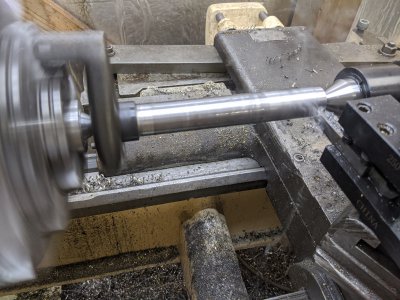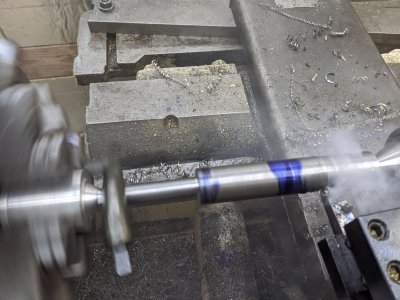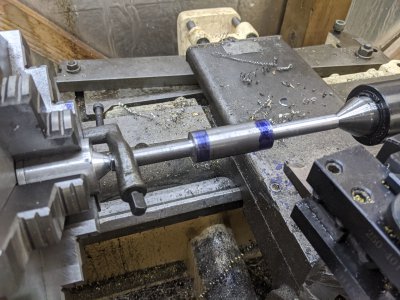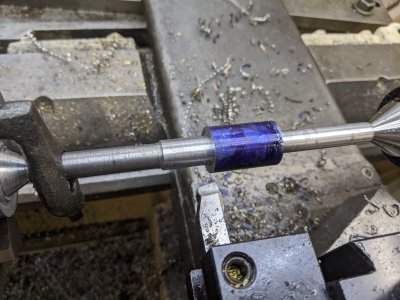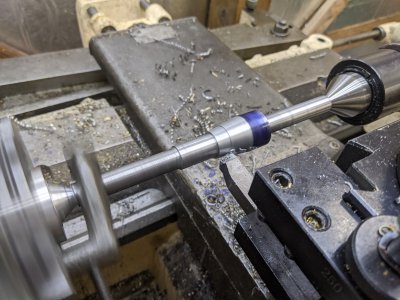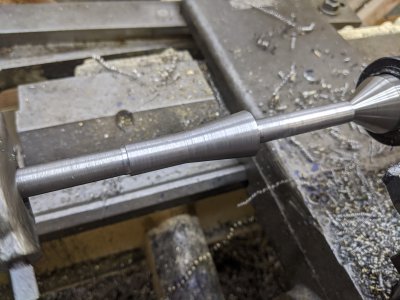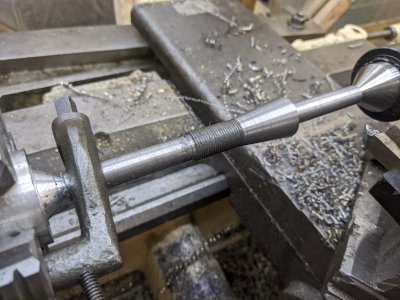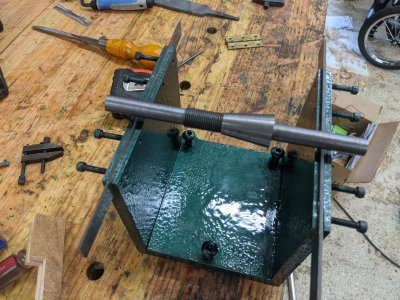- Joined
- May 27, 2016
- Messages
- 3,469
Several things about this.
I'm pleased for him that he got such a nice finish. What I could see was his surface grinder, or parts of it, moving relative to the background. Maybe all surface grinders do that in the face of reversing inertia, I don't know, but here is the place to ask.
I see the tops of his jig are drill rod, or something like it. Still theoretically a tiny point contact with the round arbor, so minimal rolling friction. It just looks a lot less deadly than the very convenient re-purposed planer blades. If the rails were drill rod, I guess they would have been glued, or secured in some non-distortion way.
I am surprised that it took that much removal from both sides to get it balanced. Of course, the closer to the middle, the less is the stress, offset by the closer to the middle, the more that needs to be removed. I have to say everything in my logic resists drilling out anything, and I remain to be convinced there is not a better way. I defer to those with the experience who can say that drilling on a ringing good grinding wheel is no big deal, and it works just fine.
For a wheel that needs eight chunks like drilled out, it speaks of a wheel that was not so sweetly set concentric to the arbor in the first place!
I have not done it yet, but I think a little calculation of the imbalance plotted vs amount off centre may be revealing.
The same calculation leads inevitably to vibration forces for a given RPM.
Going yet further, it yields the tensile load for a given wheel width and radius.
We only need the first of those. I think that the whole heavy wheel, off centre by even a tiny amount, may be worth a whole lot of drilled hole mass removal. I just don't know yet if this is so. Either way, I so dislike giving a grinding wheel such a focused weak region stress raiser, I would go some way to seeking an alternative. Can one add mass reasonably conveniently?
OK - it's just my opinion, and I don't want to be just an armchair critic. I will have to do something like this soon.
I am happy too be told otherwise from those who know more with some certainty.
I'm pleased for him that he got such a nice finish. What I could see was his surface grinder, or parts of it, moving relative to the background. Maybe all surface grinders do that in the face of reversing inertia, I don't know, but here is the place to ask.
I see the tops of his jig are drill rod, or something like it. Still theoretically a tiny point contact with the round arbor, so minimal rolling friction. It just looks a lot less deadly than the very convenient re-purposed planer blades. If the rails were drill rod, I guess they would have been glued, or secured in some non-distortion way.
I am surprised that it took that much removal from both sides to get it balanced. Of course, the closer to the middle, the less is the stress, offset by the closer to the middle, the more that needs to be removed. I have to say everything in my logic resists drilling out anything, and I remain to be convinced there is not a better way. I defer to those with the experience who can say that drilling on a ringing good grinding wheel is no big deal, and it works just fine.
For a wheel that needs eight chunks like drilled out, it speaks of a wheel that was not so sweetly set concentric to the arbor in the first place!
I have not done it yet, but I think a little calculation of the imbalance plotted vs amount off centre may be revealing.
The same calculation leads inevitably to vibration forces for a given RPM.
Going yet further, it yields the tensile load for a given wheel width and radius.
We only need the first of those. I think that the whole heavy wheel, off centre by even a tiny amount, may be worth a whole lot of drilled hole mass removal. I just don't know yet if this is so. Either way, I so dislike giving a grinding wheel such a focused weak region stress raiser, I would go some way to seeking an alternative. Can one add mass reasonably conveniently?
OK - it's just my opinion, and I don't want to be just an armchair critic. I will have to do something like this soon.
I am happy too be told otherwise from those who know more with some certainty.


